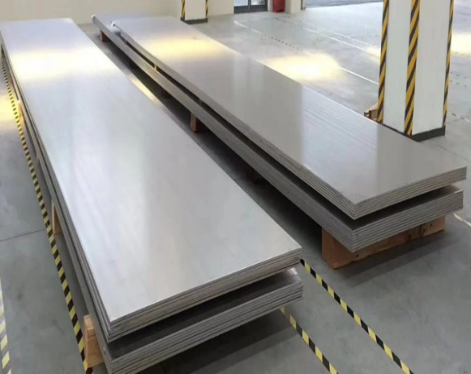External inspection
The main contents of the inspection include: whether there are any abnormal phenomena such as cracks, deformation, leakage, and local overheating on the outer surface of the pressure vessel; whether the safety accessories are complete, sensitive and reliable; whether the fastening bolts are intact and all tightened; whether the foundation is sinking, Inclination and whether the anti-corrosion layer is damaged and other abnormal phenomena. The external inspection is not only the work of the inspector, but also the item of the daily touring inspection by the operator. Safety-endangering phenomena (such as cracks, deformation, serious leakage of pressure components, etc.) should be stopped and the relevant personnel should be reported in time.
Internal inspection
The inspection of the inside and outside of the pressure vessel can only be carried out after the vehicle is parked and the inside of the vessel is cleaned. In addition to the main content of the external inspection, the main content of the inspection is to inspect the corrosion and abrasion of the inner and outer surfaces; use the naked eye and a magnifying glass to check all welds, head transition areas and other stress-concentrated parts for cracks, and use ultrasonic waves when necessary Or radiographic inspection to check the internal quality of the weld; measure the wall thickness. If the measured wall thickness is less than that of the vessel, the strength check should be carried out again, and pressure reduction or repair measures should be proposed; for vessels that may cause changes in the metallographic structure of metal materials, metallographic inspection should be carried out if necessary; The main bolts of the high-pressure vessel should use magnetic powder or coloring into the pressure vessel.
Check for cracks, etc. Through internal and external inspections, analyze the causes of the defects detected and put forward treatment opinions. Re-inspection is required after repair. The inspection cycle for the inside and outside of the pressure vessel is once every three years, but the inspection cycle for vessels with strongly corrosive and highly toxic media should be shortened. Vessels with serious defects found during operation and vessels with poor welding quality and unknown material's anti-corrosion ability should also shorten the inspection period.
Comprehensive inspection
In addition to the above-mentioned inspection items, the comprehensive inspection of pressure vessels must also carry out a pressure test (generally a hydraulic test). Carry out non-destructive inspection or spot inspection of all welds on the main welds. However, for vessels with very low pressure, non-flammable or non-toxic, non-corrosive media, if no defects are found, after obtaining certain use experience, non-destructive inspection is not required. The comprehensive inspection cycle of containers is generally carried out at least once every six years. For manufactured qualified containers containing air and inert gases, the comprehensive inspection period can be appropriately extended after obtaining use experience and one or two internal and external inspections to confirm that there is no corrosion.
The main contents of the inspection include: whether there are any abnormal phenomena such as cracks, deformation, leakage, and local overheating on the outer surface of the pressure vessel; whether the safety accessories are complete, sensitive and reliable; whether the fastening bolts are intact and all tightened; whether the foundation is sinking, Inclination and whether the anti-corrosion layer is damaged and other abnormal phenomena. The external inspection is not only the work of the inspector, but also the item of the daily touring inspection by the operator. Safety-endangering phenomena (such as cracks, deformation, serious leakage of pressure components, etc.) should be stopped and the relevant personnel should be reported in time.
Internal inspection
The inspection of the inside and outside of the pressure vessel can only be carried out after the vehicle is parked and the inside of the vessel is cleaned. In addition to the main content of the external inspection, the main content of the inspection is to inspect the corrosion and abrasion of the inner and outer surfaces; use the naked eye and a magnifying glass to check all welds, head transition areas and other stress-concentrated parts for cracks, and use ultrasonic waves when necessary Or radiographic inspection to check the internal quality of the weld; measure the wall thickness. If the measured wall thickness is less than that of the vessel, the strength check should be carried out again, and pressure reduction or repair measures should be proposed; for vessels that may cause changes in the metallographic structure of metal materials, metallographic inspection should be carried out if necessary; The main bolts of the high-pressure vessel should use magnetic powder or coloring into the pressure vessel.
Check for cracks, etc. Through internal and external inspections, analyze the causes of the defects detected and put forward treatment opinions. Re-inspection is required after repair. The inspection cycle for the inside and outside of the pressure vessel is once every three years, but the inspection cycle for vessels with strongly corrosive and highly toxic media should be shortened. Vessels with serious defects found during operation and vessels with poor welding quality and unknown material's anti-corrosion ability should also shorten the inspection period.
Comprehensive inspection
In addition to the above-mentioned inspection items, the comprehensive inspection of pressure vessels must also carry out a pressure test (generally a hydraulic test). Carry out non-destructive inspection or spot inspection of all welds on the main welds. However, for vessels with very low pressure, non-flammable or non-toxic, non-corrosive media, if no defects are found, after obtaining certain use experience, non-destructive inspection is not required. The comprehensive inspection cycle of containers is generally carried out at least once every six years. For manufactured qualified containers containing air and inert gases, the comprehensive inspection period can be appropriately extended after obtaining use experience and one or two internal and external inspections to confirm that there is no corrosion.









